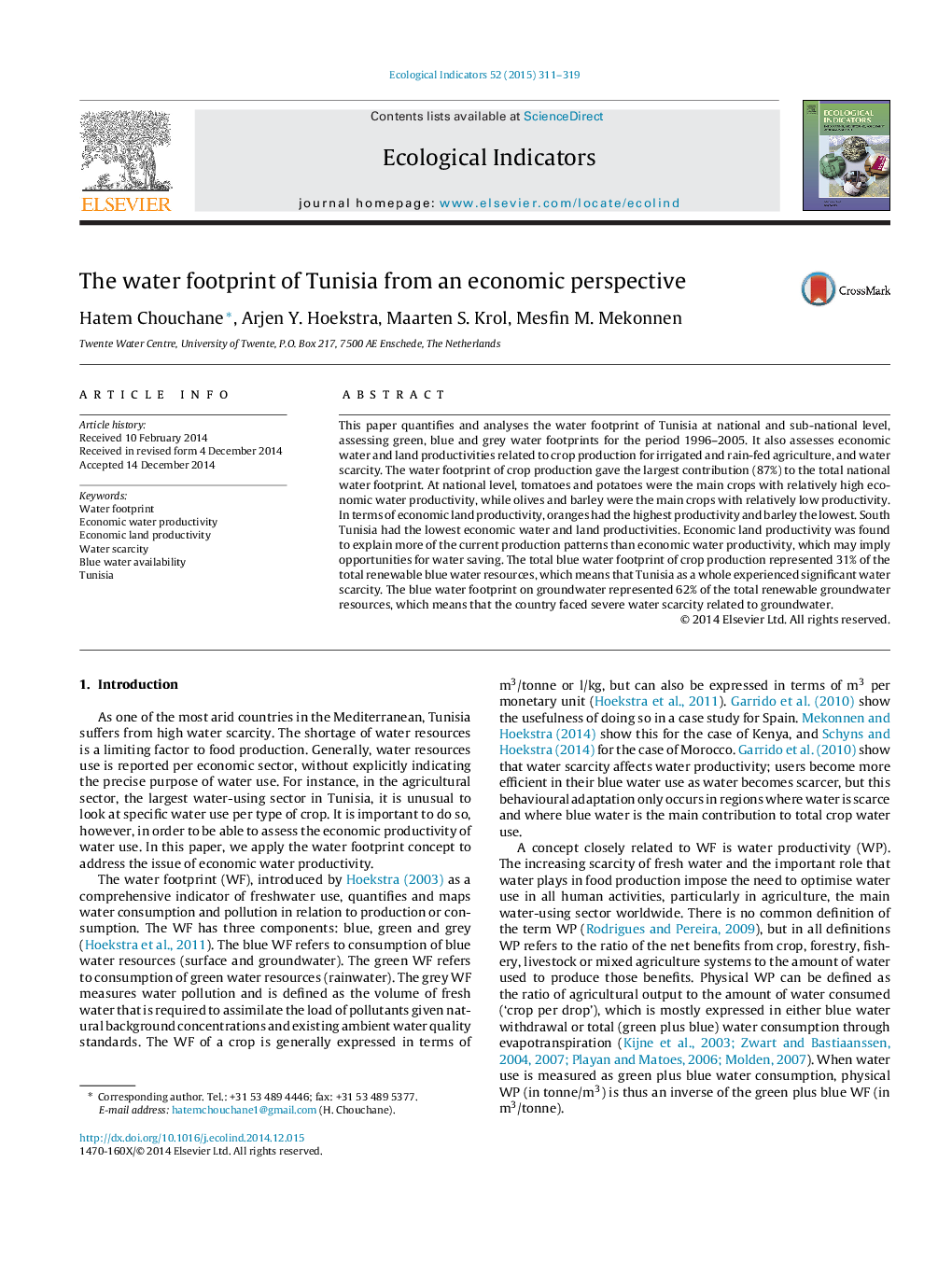| Article ID | Journal | Published Year | Pages | File Type |
|---|---|---|---|---|
| 6294556 | Ecological Indicators | 2015 | 9 Pages |
Abstract
This paper quantifies and analyses the water footprint of Tunisia at national and sub-national level, assessing green, blue and grey water footprints for the period 1996-2005. It also assesses economic water and land productivities related to crop production for irrigated and rain-fed agriculture, and water scarcity. The water footprint of crop production gave the largest contribution (87%) to the total national water footprint. At national level, tomatoes and potatoes were the main crops with relatively high economic water productivity, while olives and barley were the main crops with relatively low productivity. In terms of economic land productivity, oranges had the highest productivity and barley the lowest. South Tunisia had the lowest economic water and land productivities. Economic land productivity was found to explain more of the current production patterns than economic water productivity, which may imply opportunities for water saving. The total blue water footprint of crop production represented 31% of the total renewable blue water resources, which means that Tunisia as a whole experienced significant water scarcity. The blue water footprint on groundwater represented 62% of the total renewable groundwater resources, which means that the country faced severe water scarcity related to groundwater.
Related Topics
Life Sciences
Agricultural and Biological Sciences
Ecology, Evolution, Behavior and Systematics
Authors
Hatem Chouchane, Arjen Y. Hoekstra, Maarten S. Krol, Mesfin M. Mekonnen,
